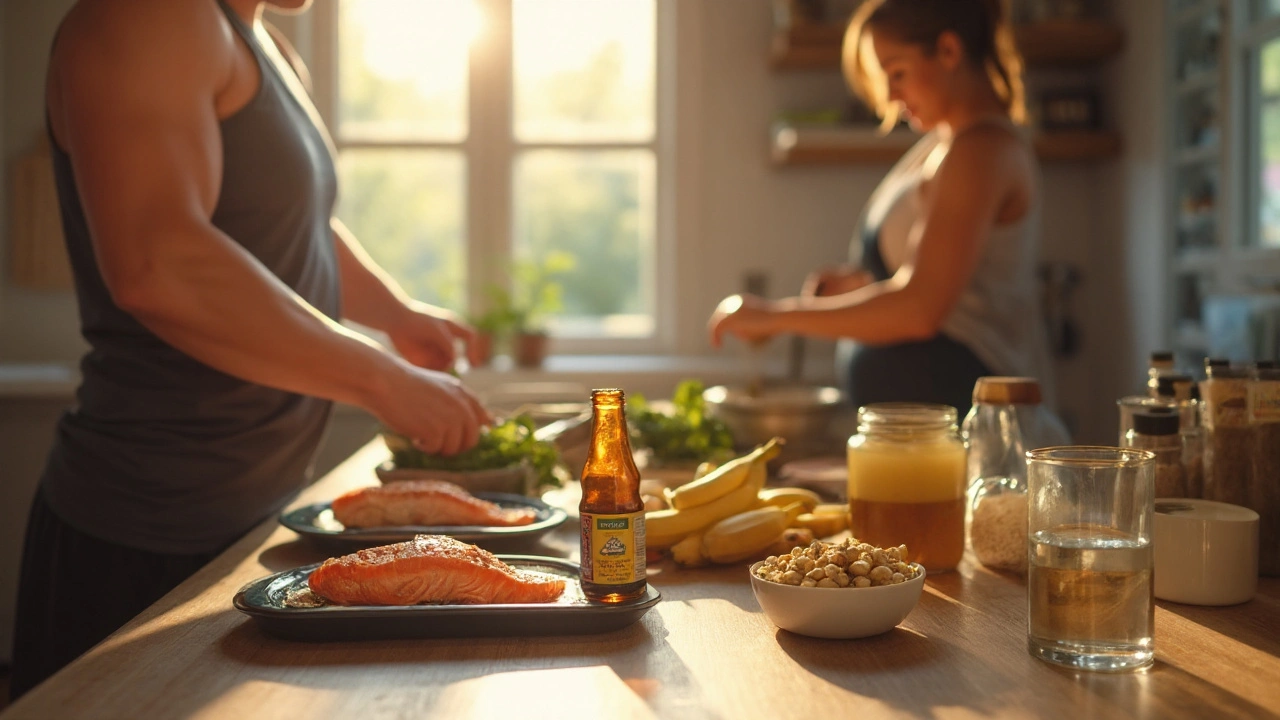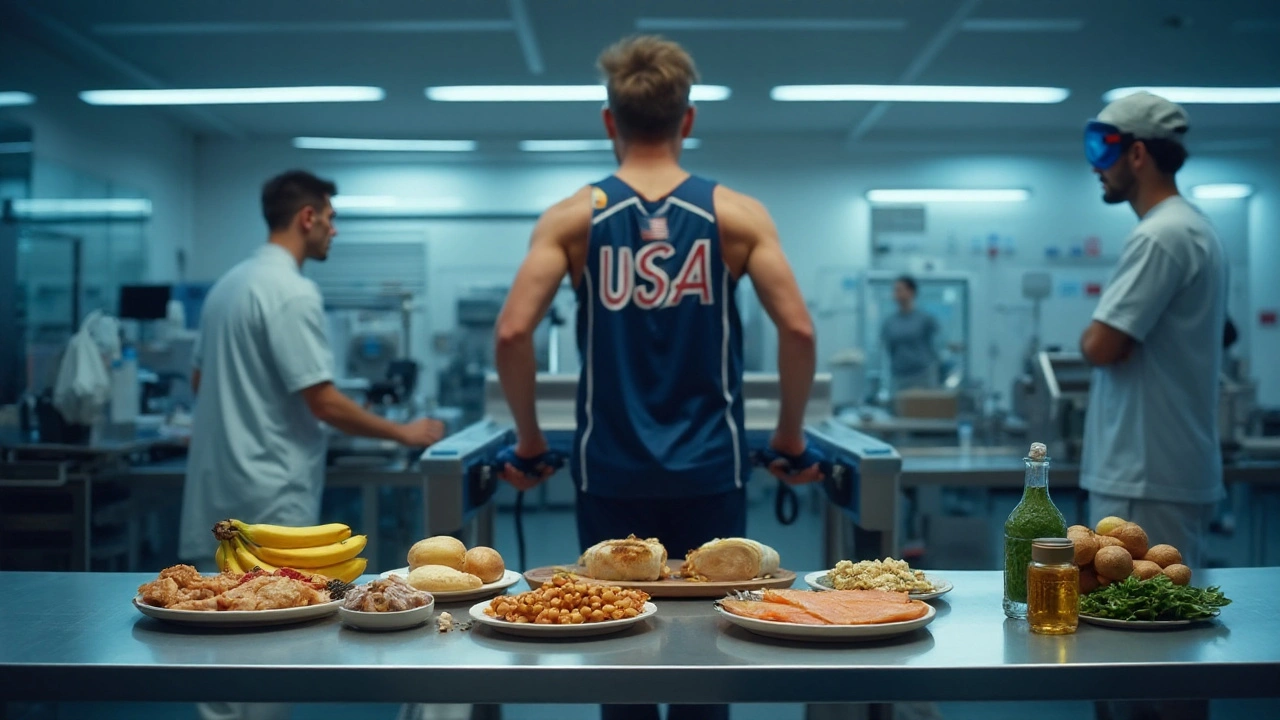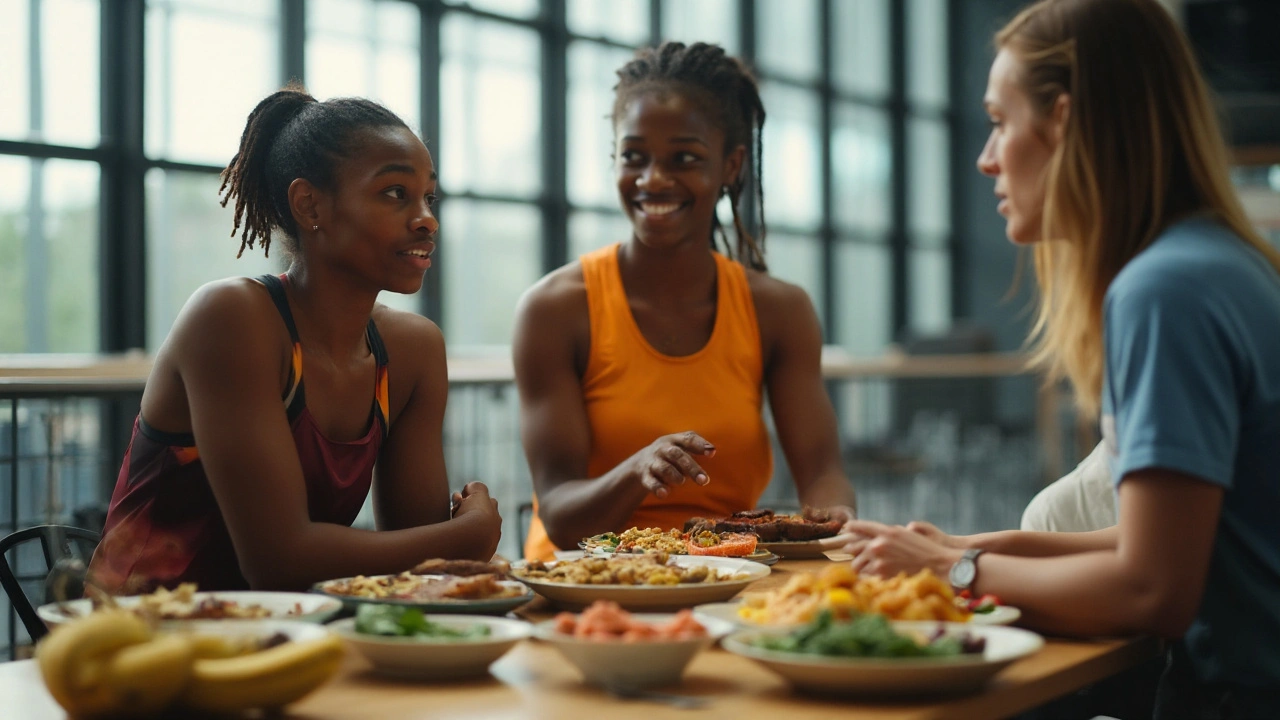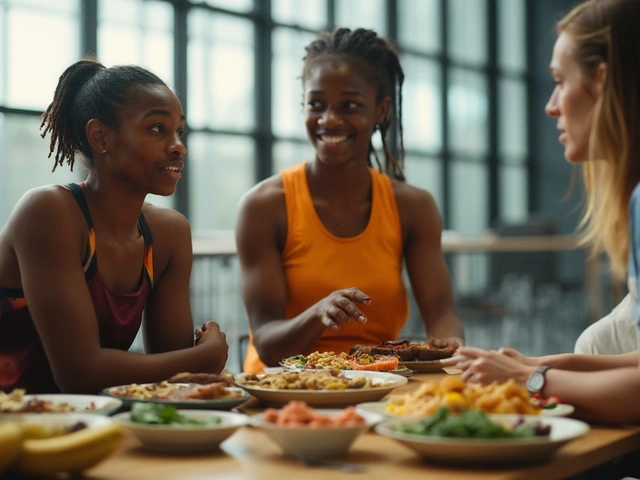You want an edge, but not snake oil. Pyridoxine sounds technical, but it’s just vitamin B6 with a marketing suit on. Can it actually help you perform better or bounce back faster? Yes-if you’re low. If you’re already eating well, it won’t turn you into a different athlete. This guide shows what B6 really does in sport, when it matters, how much to take, and the safest way to use it without numb fingers or wasted cash.
- B6 powers glycogen breakdown, amino acid metabolism, neurotransmitters, and red blood cell formation-key for training, focus, and oxygen delivery.
- Fixing a shortage helps energy and recovery; extra on top of a solid diet doesn’t boost performance in trials.
- Most athletes hit needs with food; if you supplement, keep it low: 2-10 mg/day covers gaps for most.
- Chronic high doses can cause nerve issues; labels often hide 25-100 mg. Read them.
- Best playbook: food-first, check your protein intake, and test PLP if symptoms or risk factors show up.
What Vitamin B6 Actually Does for Performance and Recovery
Let’s strip the buzzwords. Pyridoxine is one of three forms of B6 your body turns into PLP (pyridoxal-5-phosphate), the business end that makes enzymes work. In athletes, PLP shows up everywhere you care about: in glycogen phosphorylase (freeing glucose from stored glycogen), in enzymes that move and build amino acids during muscle remodeling, in neurotransmitter synthesis (dopamine, serotonin, GABA) that influence focus and perceived effort, and in the first step of heme synthesis for hemoglobin, which carries oxygen. If any one of those processes stalls, training feels harder than it should.
Here’s why that matters on the track or under a bar. During hard efforts, your muscles tap glycogen fast. Glycogen phosphorylase depends on PLP; it’s a textbook example. If B6 is low, you unlock less fuel when you need it. After training, you break down and rebuild proteins. Transaminase enzymes (like ALT and AST) need PLP to shuffle amino groups, so protein turnover slows if you’re short. On the brain side, PLP helps make GABA and serotonin-less of those and your sleep, focus, and mood wobble. Add in B6’s role in heme and you start to see why mild deficits can show up as fatigue that doesn’t make sense.
What about inflammation and recovery? B6 status tracks with markers like CRP in population studies, but that’s correlation, not proof that more B6 calms soreness. In simple terms: being low is bad for recovery. Being adequate is good. Going heavy above that doesn’t speed healing.
And performance boosts? That’s where marketing outpaces data. Large bodies of evidence say if you’re not deficient, adding more doesn’t move the needle on time to exhaustion, VO2 max, sprint power, or strength. The Australian Institute of Sport places B-vitamins (as single vitamins) in its “not supported” bucket for performance outcomes. The NIH Office of Dietary Supplements reaches the same bottom line: no ergogenic benefit in replete athletes.
So the win is simple: close a gap. If you’re undershooting, fixing it can lift low energy, improve sleep quality, and make training feel like training again. If you’re already good, B6 isn’t a legal cheat code.
Common signs you might be under-fueled on B6 (especially if you’re also dieting hard): fatigue, brain fog, low mood or irritability, poor sleep, microcytic anemia, mouth soreness or glossitis, weak immune responses, and in severe cases, neuropathy-like tingling. None of these prove a B6 issue by themselves. But if a few are crowding together-and you’re living on protein shakes and lettuce-get checked. The reliable lab marker is plasma PLP; values under about 20 nmol/L point to deficiency.
Quick note on rules: B6 is allowed under anti-doping codes. It’s a basic nutrient, not a banned substance.
Sources used in shaping this section: NIH Office of Dietary Supplements (2024 update), National Academies Dietary Reference Intakes, European Food Safety Authority’s 2023 review on B6 safety, and the AIS Sports Supplement Framework (2023).

How to Use Pyridoxine: Doses, Food Sources, and Timing
The shortest path: hit your needs with food, and use a small supplement only if your numbers or your situation call for it.
Here’s a workable, step-by-step plan I give athletes I coach and train with.
Estimate your need. For most active adults 19-50, the DRI is 1.3 mg/day. Older men need 1.7 mg, older women 1.5 mg. There’s also a handy rule of thumb that tracks with protein intake: about 0.016 mg of B6 per gram of protein. If you eat 150 g protein/day during a bulking phase, that’s roughly 2.4 mg/day. That’s not a license to megadose-just a reminder that very high protein intakes push your minimum up a bit.
Audit your day. Add up B6 from typical meals. You’ll probably be surprised by how fast it stacks:
- 1 cup canned chickpeas in a salad: ~1.1 mg
- 3 oz cooked yellowfin tuna or chicken breast: ~0.9-0.5 mg
- 1 medium baked potato: ~0.6 mg
- 1 medium banana: ~0.4 mg
- Fortified cereal: 0.5-2.0 mg per serving (check the label)
Two or three of those and you’re already at or above your daily target.
Prefer food-first. I get it-work, kids, and late sessions can wreck meal timing. For what it’s worth, I prep a chickpea-tuna bowl on Sundays while Bridget Romano corrals Everett and Orlando off the kitchen island. It keeps us all fed and my B6 box checked without thinking about pills.
If needed, supplement small. A low-dose daily capsule (2-10 mg) is enough to cover gaps for most athletes. Choose either pyridoxine HCl or P5P (PLP) forms; both raise status. Unless your clinician says otherwise, you don’t need 25-100 mg. Those doses are why B6 ends up on the news for neuropathy.
Timing is simple. There’s no pre-workout boost. Take B6 with a meal you already eat. If high doses make your dreams too vivid, shift the dose earlier in the day or lower it.
Pair smartly. B6 works alongside folate and B12 in homocysteine metabolism. If your homocysteine is high, a B-complex with modest doses may help. For muscle, think big rocks first: protein spread through the day, carbs to refill glycogen, sleep, creatine if it fits your plan.
| Item | Amount (mg) | Notes |
|---|---|---|
| RDA Adults 19-50 (M/F) | 1.3 | DRIs, National Academies |
| RDA Males 51+ | 1.7 | DRIs |
| RDA Females 51+ | 1.5 | DRIs |
| RDA Pregnancy | 1.9 | DRIs |
| RDA Lactation | 2.0 | DRIs |
| Upper Limit (US/NAM) | 100 | To prevent neuropathy; daily, chronic |
| Upper Limit (EU/EFSA 2023) | 12 | More conservative EU value |
| Chickpeas, 1 cup (canned, drained) | ~1.1 | Food source |
| Tuna, yellowfin, 3 oz cooked | ~0.9 | Food source |
| Chicken breast, 3 oz cooked | ~0.5 | Food source |
| Potato, baked, medium | ~0.6 | Food source |
| Banana, medium | ~0.4 | Food source |
| Fortified breakfast cereal, 1 serving | 0.5-2.0 | Check label |
Cheat-sheet examples you can copy:
- Endurance day: Oatmeal with fortified cereal mix (0.8 mg), banana (0.4 mg), chickpea-tuna salad (1.5 mg), baked potato with grilled chicken (1.1 mg). Total around 3.8 mg without supplements.
- High-protein strength day (180 g protein): Aim ~2.9 mg. Greek yogurt parfait (0.3 mg), fortified cereal (1.0 mg), chicken burrito with potatoes (1.1 mg), salmon with rice and greens (0.6 mg). You’re there.
Quick label checklist:
- If your multivitamin or preworkout lists 25-100 mg B6, ask why. A separate 2-10 mg daily cap is often smarter.
- Look for third-party tested marks (NSF Certified for Sport, Informed Sport) if you compete under anti-doping rules.
- Scan energy drinks and shots; they often hide 10-40 mg of B6 per can.
Simple decision tree:
- Eating a varied diet with fish, poultry, legumes, tubers, and some fortified foods? No symptoms? You likely don’t need a B6 supplement.
- Cutting calories, low appetite, vegan and barely touching legumes/potatoes/fortified foods, or heavy alcohol intake? Consider 2-5 mg/day.
- On isoniazid or similar meds? You likely need a supplement-ask your clinician for dose.
- Symptoms like fatigue, glossitis, low mood, or tingling with a sparse diet? Get a PLP blood test. Correct the diet and consider 5-10 mg/day until labs normalize.
One more thing: the form. Some supplements sell P5P (the coenzyme) as superior. In real people with normal digestion, both pyridoxine HCl and P5P raise PLP status. Pick the one that fits your budget and is third-party tested. The dose matters more than the form.
And because this is an SEO page and you might be skimming: vitamin B6 isn’t a performance booster in already well-nourished athletes. It’s a maintenance tool. Use it that way.

Safety, Red Flags, and Real-World Scenarios
Let’s start with the headline you don’t hear often: too much B6 can harm nerves. Chronic high intakes have caused sensory neuropathy-tingling, numbness, loss of balance. The US Upper Limit is 100 mg/day, but Europe pulled theirs down to 12 mg/day in 2023 after case reports at lower doses. That gap isn’t a mistake; it reflects different safety approaches. My rule for healthy athletes without a diagnosed need: stay under 10 mg/day from supplements unless your clinician says otherwise. Food doesn’t cause toxicity.
Interactions to know:
- Isoniazid, cycloserine, and hydralazine can deplete B6-supplementation is standard under medical care.
- Levodopa (without carbidopa): B6 can lower its effectiveness. If you’re on levodopa/carbidopa, this is usually not an issue, but talk to your doctor.
- Phenobarbital and phenytoin may interact with B6 metabolism.
- Alcohol impairs B6 status, especially with low food intake.
Who’s at higher risk of running low?
- Athletes in weight-class sports during aggressive cuts.
- Endurance athletes stacking big weeks while eating light and skipping legumes/tubers.
- Heavy drinkers.
- People with malabsorption conditions or on specific meds above.
Now let’s translate this into real life.
Scenario 1: Marathon block, pristine macros, weird fatigue. You’re hitting carbs and protein but living on white rice, chicken, and smoothies. Add chickpeas or a baked potato to your dinner and a banana on your second run. If that’s a stretch, add a 5 mg B6 capsule with breakfast for a month. If you still feel off, ask for a PLP test.
Scenario 2: Strength cycle with 180-200 g protein/day. Your minimum creeps up with protein use. Make sure each meal has a B6 source-cereal at breakfast, poultry/fish and potatoes at lunch/dinner, plus legumes somewhere. If your multivitamin already has 10 mg B6, you probably don’t need more.
Scenario 3: Vegan triathlete. Easy win: chickpea pasta, lentil soups, potatoes, bananas, and fortified cereals. No supplement needed if that’s routine. If you’re a granola-and-salad-only person, consider 2-5 mg/day.
Scenario 4: Combat athlete in a hard cut. Appetite is low, and you’re ditching legumes. Use a 5-10 mg supplement through the cut, then return to food-first after weigh-in week.
Scenario 5: Masters athlete. Needs are slightly higher for men 51+ and women 51+. If appetite is light, aim for a daily potato/legume serving or a small supplement.
Mini‑FAQ
Q: Does B6 reduce DOMS?
A: Not directly. DOMS is about micro-damage and inflammation. B6 supports protein turnover, but extra above adequate doesn’t erase soreness. Focus on sleep, protein (~0.3 g/kg per meal), creatine, omega‑3s, and smart load management.
Q: P5P vs pyridoxine-what should I buy?
A: Both raise blood PLP. There’s no consistent performance difference in healthy people. Pick a low dose and a brand that’s tested.
Q: Can B6 help cramps?
A: Cramps are multifactorial: fatigue, pacing, neural excitability, hydration. B6 isn’t a proven fix. Address training errors, sodium and fluid balance, and carbohydrate availability.
Q: Do athletes need more B6 than the RDA?
A: Sometimes. High protein intake can push needs up modestly (the 0.016 mg/g protein rule). Most athletes still hit targets with normal food. If protein is very high or appetite is low, a 2-5 mg supplement closes the gap.
Q: Will B6 improve focus or sleep?
A: If you’re low, fixing it can help. High doses can make dreams intense and disturb sleep for some. Keep doses modest and take earlier in the day if needed.
Q: Is B6 a fat-burner?
A: No. It supports metabolism as a cofactor but doesn’t increase energy expenditure by itself.
Q: How do I test B6 status?
A: Ask for plasma PLP. Values below ~20 nmol/L suggest deficiency. Retest 6-8 weeks after diet changes or supplementation.
Q: How often should I take it?
A: Daily, if you’re supplementing. Water‑soluble vitamins work better with steady intake. Cycling isn’t needed.
Troubleshooting and next steps
- If you feel tingly or numb after starting a high‑dose B complex, stop it and talk to your clinician. Swap to food-first or a 2-5 mg dose after clearance.
- If you’re on isoniazid or similar meds, don’t DIY. Your dose may be 25-50 mg/day under medical care, but that’s specific to the drug regimen.
- If you compete in tested sport, pick supplements with NSF Certified for Sport or Informed Sport to avoid contamination.
- If your diet swings with travel or tournaments, pre-pack shelf-stable B6 foods: tuna packets, canned chickpeas, bananas, and a small bag of fortified cereal.
- If labs show low PLP, fix diet first, add 5-10 mg/day, and retest in 6-8 weeks. Once normalized, drop to food-only or 2-5 mg/day.
If you remember one thing, remember this: B6 is about removing friction. Adequate levels make fuel use, protein remodeling, mood, and oxygen delivery work the way training plans assume they will. You don’t need megadoses. You need consistency.


Finally someone cuts through the supplement BS. I used to crush 50mg B6 pills thinking it’d make me faster. Turned my fingers into numb sticks for months. Now I eat chickpeas like they’re going out of style and my recovery’s way better. Stop buying hype, start eating food.
I’m a vegan endurance runner and I was skeptical too-but after reading this, I started adding lentils and fortified cereal. My fatigue and brain fog cleared up in like 3 weeks. Not magic, just basic nutrition. Also, bananas are underrated. 🍌
Love how this breaks it down without fluff. I coach a bunch of high school athletes and I’ve seen so many of them take B6 because some influencer said it ‘boosts energy.’ Nope. If they’re eating beans, potatoes, chicken, and bananas? They’re golden. The real issue is kids skipping meals because they’re ‘cutting calories.’ Food first, always.
PLP testing is the real MVP here. I had chronic fatigue for 8 months, thought it was overtraining. Got my plasma PLP checked-was at 14 nmol/L. Took 5mg/day for 6 weeks, retested at 32. Energy came back. No magic. Just biology. Also, avoid energy drinks with 40mg B6. They’re just sugar + anxiety in a can. 🙃
Y’all are missing the point. B6 isn’t the issue-it’s the glycemic load. Low-carb diets cause mitochondrial stress, and B6 is just a bandaid. The real problem? Pharma and supplement companies pushing micronutrients as performance enhancers to sell pills. You’re all being manipulated. Also, ‘PLP’ is a lab term. Real athletes eat meat and potatoes. End of story.
Who funds this? 🤔 Big Food? Big Pharma? B6 is a trap. They want you thinking you need supplements so you don’t question why your ‘clean’ diet is making you tired. Meanwhile, the real villain is glyphosate wiping out nutrients in soil. No one talks about that. I’m on a 100% organic, non-GMO, ancestral diet now. B6? Nah. I just eat dirt. 🌱
Oh wow, a post that doesn’t say ‘take this pill’ and actually tells you to eat food?? Radical. I’m from the South and we eat collards, black-eyed peas, and sweet potatoes-guess what? We don’t need supplements. But then again, I live in a state where people think ‘protein powder’ is a vegetable group. 😅 Honestly, if you’re supplementing B6 because you’re eating nothing but kale smoothies and protein bars… maybe try eating something that actually looks like food? Like, a potato? With skin? On purpose?
So what you’re saying is… nothing works unless you’re deficient? Groundbreaking.
This is the kind of post I wish I’d found 5 years ago when I was doing 200g protein a day and taking a 50mg B6 pill every morning. My hands were tingling and I thought it was ‘just part of training.’ Nope. Turns out, I was overdoing it. Switched to food + 5mg supplement, now I sleep better, recover faster, and my coach finally stopped asking if I was on something. 🙌 Also, if you’re vegan and don’t eat legumes, please just get a 2mg capsule. Your nerves will thank you. And yes, bananas count. They’re not just for kids.
Everything is a metaphor. B6 is just a symbol for the illusion of control. We think we can optimize ourselves with pills, but true performance comes from surrendering to the rhythm of food, rest, and silence. 🌿